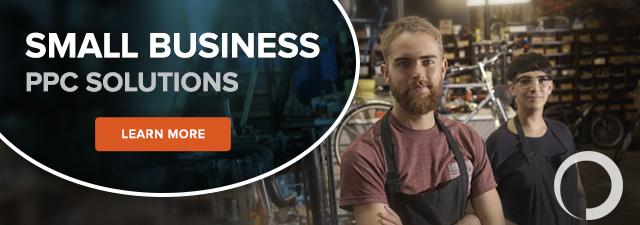6 Ways to Organize Your PPC Account to Improve Performance
Erica Opsvig May 20 2016

Even after mastering the basics, a lot of people new to AdWords struggle to find the “perfect” way to organize and structure their account. It’d be great if there were a standard cookie cutter guide to follow, but the truth is, there is no such thing.
How your account should be structured depends on your advertising goals, budget, website, audience and many other factors that are unique to your business. Not only that, but in most cases, account organization and structure are fluid and will change over time.
First, some basics
For most small accounts starting out, it’s safe to start with one-to-three campaigns, focusing on your core offerings. Within each campaign there should be multiple ad groups, each containing tightly organized keywords and ads. All should directly relate to each other to make management easier and to set yourself up to have strong Quality Scores.
Understanding this framework only gets you so far. You still have to decide how to fit the puzzle pieces together. Here are a few ideas that might work well for your business.
1. Website structure
If your website has a strong structure, with a natural hierarchy for your products or services, the simplest way to structure your campaign is to mirror your website. Campaigns serve as major category links (broad product areas), and ad groups as sub-categories (specific product areas or individual products). That way you can have your ad copy refer to the product and link directly to the product category or product page.

2. Theme
The most intuitive way to organize your campaign is by theme or topic–and this may not necessarily match the structure of your website.
For example, a website that is built out very granularly with a large hierarchy would not only be tedious to manage but might have search volume that is too low in certain areas to even make it worth the trouble of setting up. Think about which parts of your website or business you want to focus on and design your account around these areas.
3. Location
Since location targeting is set at the campaign level, you may want to organize your campaigns dependent on your store locations or areas you want to target.
For example, a company with seven retail stores in northern California may have seven campaigns–one for each store location. Each campaign could have specific ad copy relating to the area and a corresponding phone number and location extension to direct people to the closest store.
4. Performance
Since budget is set at the campaign level, it makes sense to organize your account based on the areas that perform the best. This way you can allocate your spending accordingly. If certain ad groups in a campaign are converting much higher than the rest, and the campaign is limited by budget, you might be losing out on valuable conversions.
In this case, you could create a separate campaign for those high-converting ad groups and give it a higher budget so they can perform at their highest potential.
5. Match types
This one is a highly debated topic in the PPC world. Having a strategy for dealing with multiple match types can be tricky and gets more confusing the larger your account is.
The general idea here is that if you split apart broad, phrase, and exact match keywords into their own ad groups then you can have more control over the ad copy and optimization that each gets. Theoretically, exact match keywords should perform better than broad so treating them differently makes logical sense.
Whether you want to house keyword match types in their own campaigns or ad groups depends on the size of your business. It’s important to note that organizing campaigns and ad groups by match type is a very granular approach and might not be helpful for a smaller-sized account.
6. Seasonality
If you want to maximize your ROI around a certain holiday or time period, it can be beneficial to create separate, time-sensitive campaigns. This way you can allocate specific budgets to them for the time period and reactivate them next year or season if they perform well. Make sure to adapt the ad copy and keywords so they relate to the holiday or occasion each new season, though.
Structuring your account appropriately for your business is key to PPC success. It may take some testing to find what works best for you. So don’t be afraid to move things around because nothing is permanent!
Major structural changes can have a huge impact on the performance of an account, though, so have a plan. The stronger your account organization, the easier your life will be moving forward!

Erica Opsvig
Erica came to Portent after recently finishing a Masters degree in Digital Marketing. She graduated from the University of Washington with a BA in Marketing and is a true Seattleite. She can't go a day without coffee! Read More

I found this really helpful. I will put this into consideration as we update our PPC account. Thank you.
Thank you! Glad you found it useful. :)